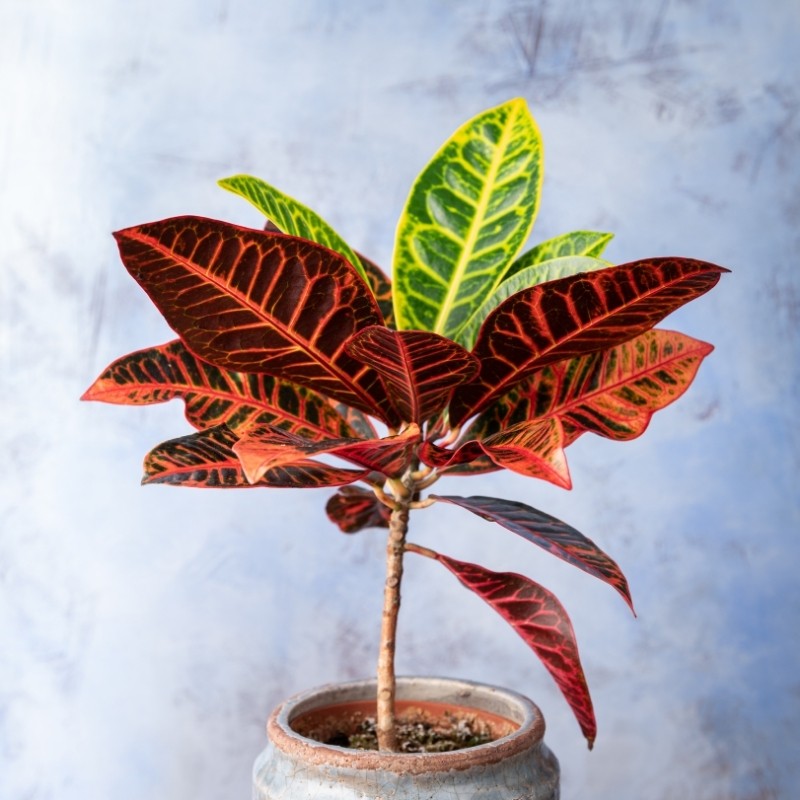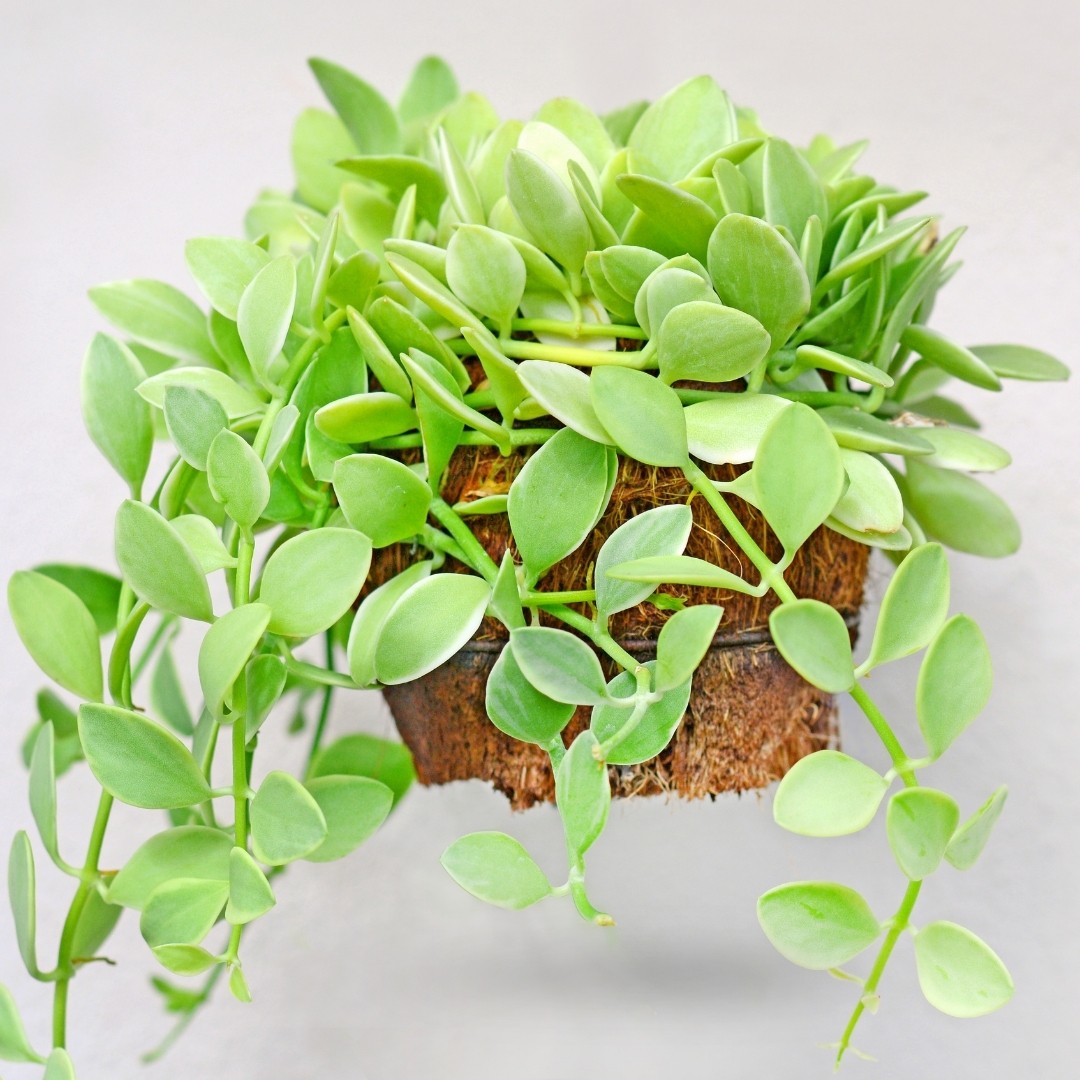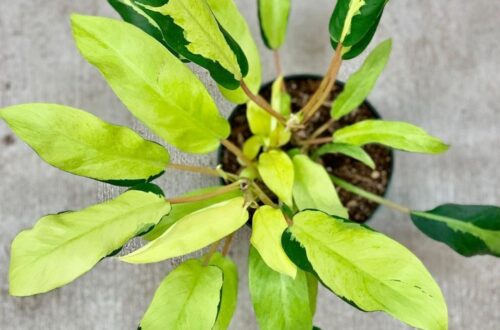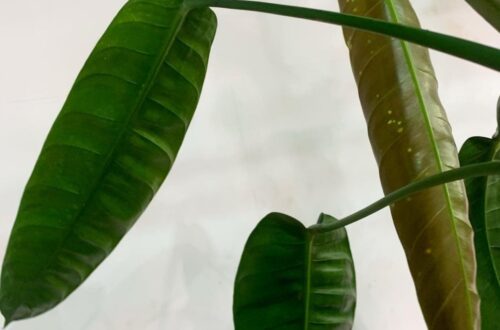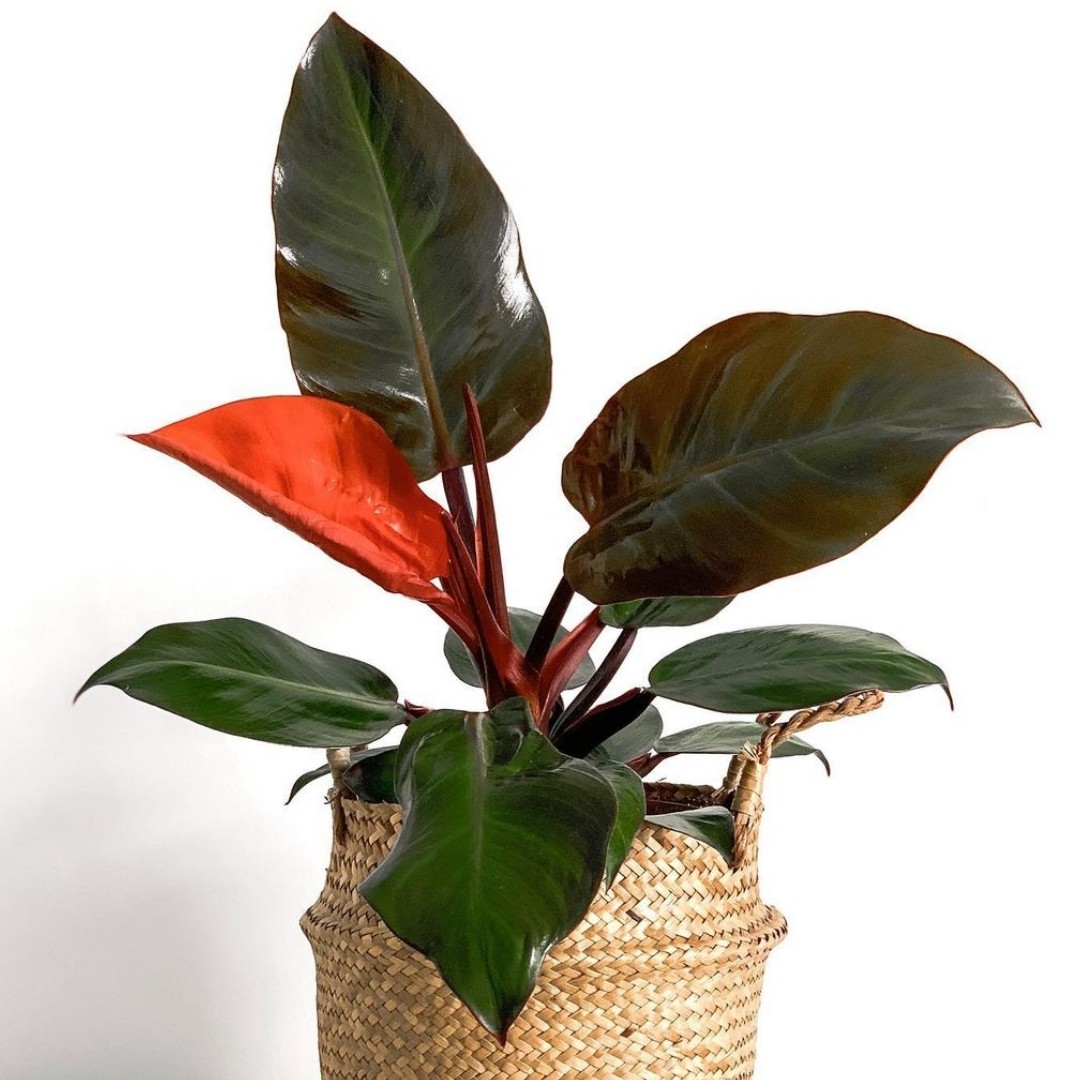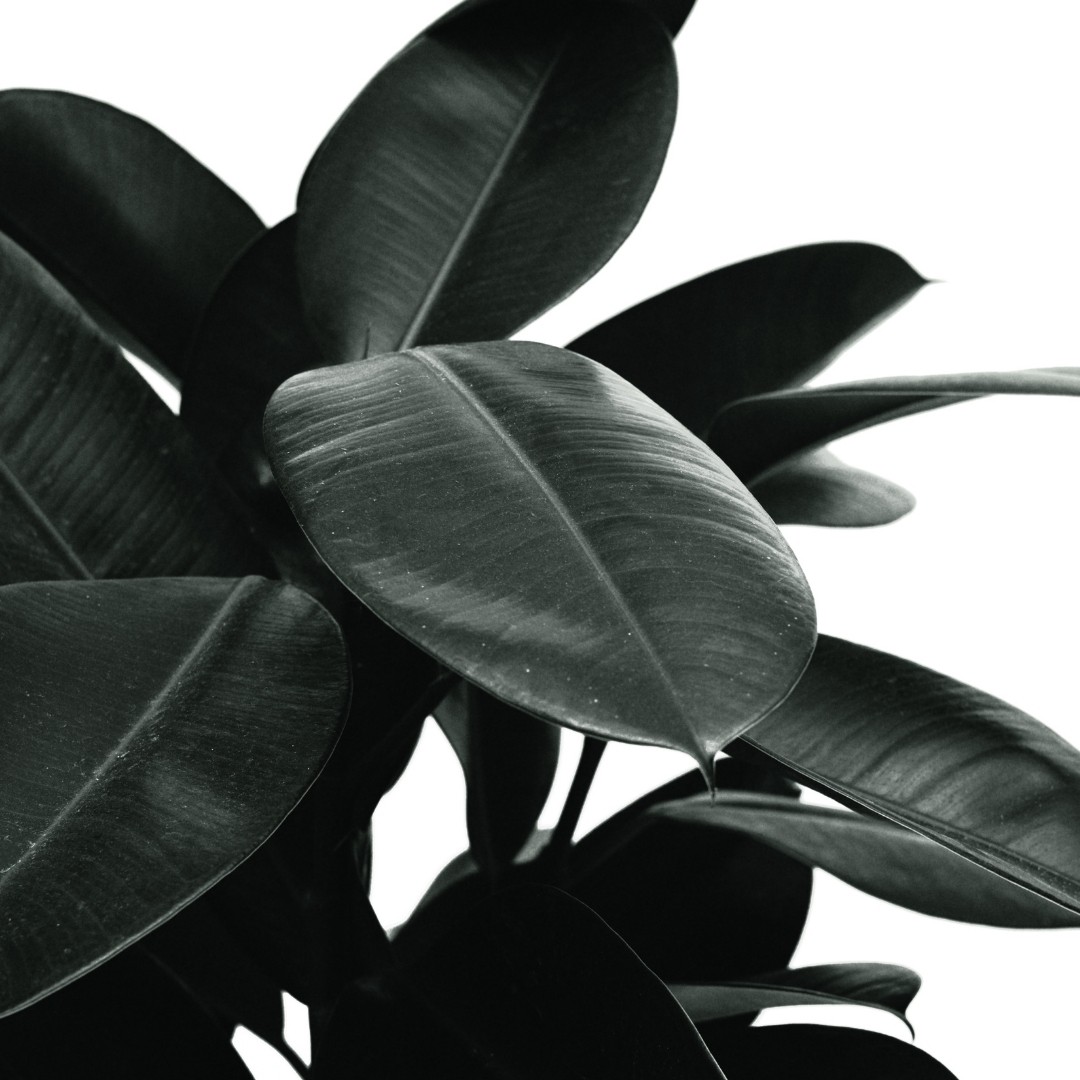
Rubber Plant Care
Welcome to our guide to rubber plant care and propagation. Rubber plants are really easy to care for and won’t take much effort to keep vibrant and healthy…
Rubber Plant Care Summary
| Light needs: | From medium to bright. |
| Watering needs: | Let the top layer dry out before watering again. |
| Fertilizer: | Feed a balanced fertilizer once a month in spring and summer. |
| Soil: | A well draining peat based potting compost |
| Humidity: | Will be fine in most households without the need for extra humidity or misting. |
| Temperature: | 15ºC-25ºC (59ºF-77ºF). |
| Where to buy: | Try our list of Rare Plant Shops. |
| Other names: | Rubber fig, rubber tree, ficus elastica |
| Common issues: | Overwatering. |
Introduction
Welcome to our guide to rubber plant care. The rubber plant aka ficus elastica is a really easy to care for and great looking popular houseplant. They are very common, and for good reason, the various varieties all have big bold beautiful leaves that make them one of the most loved houseplants around.
See also: Fiddle Leaf Fig Care, Fiddle Leaf Fig Propagation, Ficus Shivereana Care, Variegated Ficus, Variegated Fiddle Leaf Fig, Rubber Plant Propagation In Water.
Tip: we recommend Etsy for buying plants. Look for the best rated seller you can, and try to buy as close to your home as possible so the plant does not travel too far.
A note about affiliate links: when you buy a plant, pots, soil, or other goods through links on this article we sometimes earn a commission. It doesn’t cost you anything, but it really helps us out if you do use them. Thanks a lot! An example of this is if you buy a plant on Etsy using this link. Read our privacy policy for more information. Thanks again.
Light Needs
Rubber plants will grow best with good indirect sunlight, and will also do well in lower light areas of your home. Be careful putting them outside as, although they can grow well, they will burn if not slowly acclimatized.
How Often to Water A Rubber Plant
You should let the top layer of soil of your rubber plant dry out before watering it again. In the summer this will be about once a week, and less in the winter. Although these plants re tough hand tolerant of most conditions, you still need to be careful not to over water them. I would give them a well draining mix to be safe.
Fertilizer
You can feed your ficus elastica a balanced fertilizer in the growing season (which is from about April to October), once a month to encourage growth.
Soil
A well draining peat based potting compost will suit a rubber plant well. Some people mix in a little perlite or even cactus soil to make sure the plant drains well.
Rubber Plant Vs Baby Rubber Plant
The baby rubber plant is just another name for the peperomia obtusifolia, it is a much smaller houseplant and unrelated to the rubber plant.
Propagating A Rubber Plant
You can propagate a rubber plant by rooting it in water then moving it to soil I like to root it in water first as they are fairly slow growing and take a long time to propagate, and I find you can get rot more easily with soil before the plant has become established. So I take a cutting, not just a leaf, you want the node on the main branch too, so an end cutting is good. I then leave it for half a day so the wound is closed (an open wound can rot more easily). Then it should be put in a jar of water. It will take 2 months or so for a good amount of roots to establish so be patient and keep the water topped up. Change the water if it becomes cloudy as that can also lead to rot.
When the roots are fairly big you can move it to soil and water it in. Keep it humid for a month or so until it starts to put out new growth from the top. At this point you can treat it as a small plant.
For more on rubber plant propagation see our guide: Rubber Plant Propagation and Rubber Plant Propagation In Water.
Is It Toxic To Cats?
They are toxic to cats if eaten, and can cause vomiting and numbness. So seek vets advice immediately if your pet eats any.
Rubber Plant USDA Zone
You can put them outdoors all year round in zones 9-11.

When To Repot A Rubber Plant
You will know when a rubber plant needs repotting as it’s roots will grow through the bottom of the pot and sometimes through the top layer of soil too. The best time to pot it up a size or two is in spring.
Humidity
Rubber plants prefer some humidity but will be fine in most households without the need for extra humidity or misting. Rubber plants do not need extra misting in most circumstances.
Temperature
Rubber plants will do well in household temperatures 15ºC-25ºC (59ºF-77ºF). Just make sure they do not get down to freezing, preferably keep them above 10ºC (50ºF). They are really tolerant to be honest and will take a lot of punishment!
Where To Buy a Rubber Plant
Rubber plants crop up for sale in almost every florest or garden center, support your local plant store!
Other Names for Rubber Plant
Rubber fig, rubber tree, ficus elastica.
Types Of Rubber Plant
There are many varieties of rubber plant, I’ll run down a few of the most commonly sold here…
Ficus Elastica Robusta – the standard rubber plant, most common rubber plant, with big beautiful waxy leaves.
Ficus Elastica Abidjan – known for its dark, almost black leaves a real stunner.
Ficus Elastica Decora – it has really shiny, lush green leaves, lighter than most other rubber plants.
Ficus Elastica Tineke – a rubber plant with creamy variegated borders to it’s leaves.
Ficus Elastica Ruby – it has a variegated border to its leaves, but also a light salmon pink coloring.
Ficus Elastica Burgundy – dark, matt leaves that have a dark purple, burgundy hue.
Ficus Elastica Melany – glossy green leaves with a darker, purple center.

Rubber Plant FAQs and Common Problems
As with a lot of houseplants, a common issue is overwatering, make sure the top layer is dry before watering it.
Rubber Plant Yellow Leaves
Rubber plants can turn yellow and even drop off when the plant is over watered. It can also be from underwatering. The best thing to do is to check the plant weekly and water it only if it needs it.
Why Is My Rubber Plant Drooping?
Drooping leaves are sign of over watering – if it is sufferings, take it our from it’s wet soil, let it dry out and then repot it into dry soil. You could also take some cuttings at this point in case the rot spreads, and you can grow another plant using Rubber Plant Propagation.
Do Rubber Plant Leaves Grow Back?
Rubber plants sometimes shed leaves as they grow, they may grow back towards the top, but are less to grow back at the bottom. They turn into trees over time and the bottom will become the bark.
Why Is My Rubber Plant Dropping Leaves?
A rubber plant can drop it’s lower leaves as it gets older. This is normal, as it grows newer leaves at the top some of the older lower leaves may drop off.
Can Rubber Plant Grow From Leaf?
You can propagate a rubber plant from leaf cutting as long as it has the full stem section with it. It will propagate in water, soil or moss as normal. See Rubber Plant Propagation for more info.
Tip: take a cutting and keep it as center piece in a jar of water..
Can Rubber Plant Grow In Water?
Rubber plants can be rooted in water, they can even grow in water indefinitely. There is a picture of one of mine below that has been growing in water a long time.
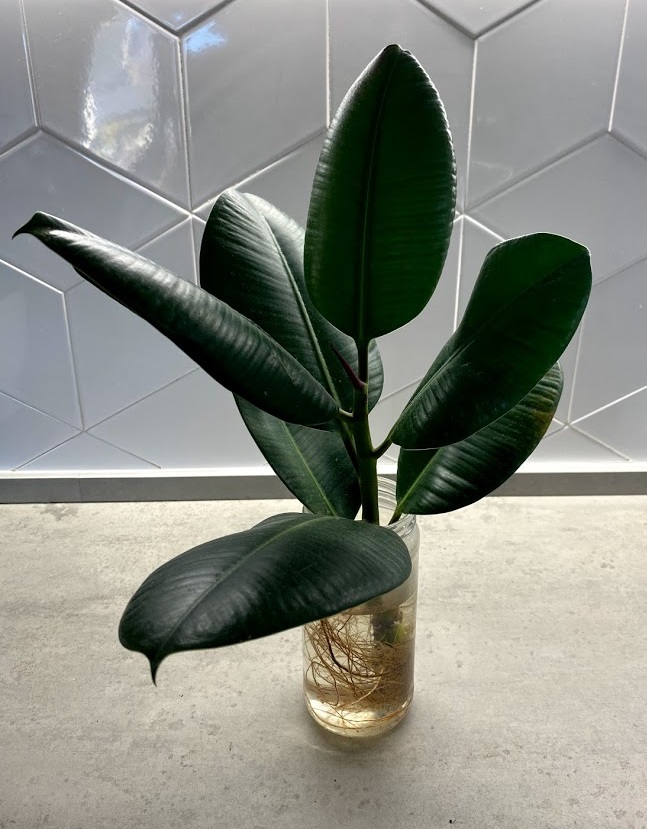
Can Rubber Plant Live Outside?
Rubber plants can live outside and are tolerant of a number of conditions. Try to keep them above 10°C (50°F), at least until they are trees. They can become accustomed to full sun too in many cases.
Can You Use Cactus Soil For Rubber Plant?
Rubber plants will do well in cactus soil. They are really tolerant of almost any conditions, but do not like to get waterlogged, a well draining compost like a cactus soil is often used for rubber plants to increase drainage. It is a great way to ensure they don’t get a doggy bottom.
Other Articles You Might Like
Hope you found this rubber plant care guide useful, you might also like our articles on Water Propagation, Rubber Plant Propagation, Fiddle Leaf Fig Care, Pothos Plant Care.
Please follow us on Instagram for more info.
